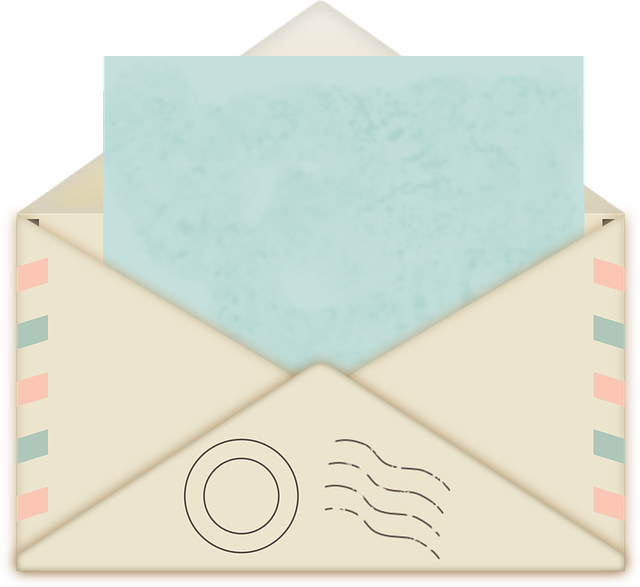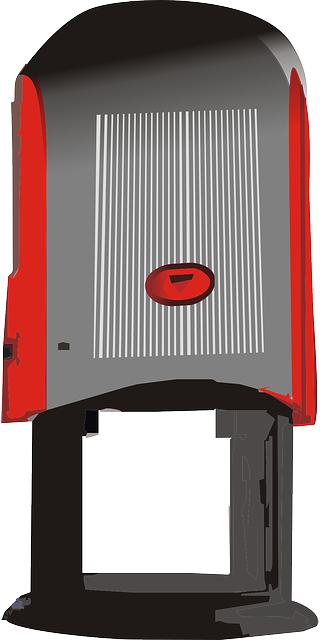Are you tired of creating email designs that fail to engage your audience? Do you want to increase open rates and click-through rates? Then it’s time to harness the power of color psychology in your email design.
Color has a profound influence on human emotions and behavior, and when used strategically, it can greatly enhance the effectiveness of your email campaigns.
In this article, we will delve into the role of color psychology in email design and how it can help you create visually appealing and persuasive emails. We will explore how different colors evoke specific emotions and how you can use this knowledge to your advantage. Additionally, we will discuss the importance of color in building brand identity and how to create a visual hierarchy with color.
Furthermore, we will uncover the power of color contrast and how it can guide your audience’s attention to the most important elements of your email. We will also touch upon color associations and cultural differences, as understanding these nuances is crucial in designing emails that resonate with diverse audiences.
Lastly, we will highlight the significance of testing and analyzing color choices to ensure optimal results. By the end of this article, you will have a solid understanding of how to leverage color psychology in email design to create impactful and successful campaigns. Get ready to captivate your audience and achieve the results you’ve been aiming for.
Key Takeaways
- Understanding color psychology influences consumer behavior and decision making
- Consistent use of brand colors increases brand recognition by up to 80%
- Testing different color combinations is important to determine effectiveness
- Cultural sensitivity is important in email design, as color associations vary across cultures
The Influence of Color on Emotions
Discover how different colors can evoke powerful emotions and enhance the impact of your emails! The influence of color on emotions is a key factor in email design, as it has the power to grab attention and evoke specific feelings in your audience.
By understanding the psychology behind colors, you can strategically use them to influence consumer behavior and impact decision making. For example, warm colors like red and orange can create a sense of urgency, while cool colors like blue and green can promote calmness and trust.
Additionally, studies have shown that certain colors can elicit specific emotions. For instance, red is associated with excitement and passion, while blue is linked to trust and reliability. By utilizing these color associations, you can create emails that resonate with your audience on a deeper level, increasing engagement and conversion rates.
Now, let’s explore how you can use color to enhance your brand identity.
Using Color to Enhance Brand Identity
When it comes to enhancing your brand identity, color plays a crucial role. By creating a cohesive visual identity through color, you can establish a strong and recognizable brand presence.
Incorporating your brand colors into email design is an effective way to reinforce your brand and leave a lasting impression on your audience. Research has shown that consistent use of brand colors can increase brand recognition by up to 80%, making it a powerful tool in building a strong brand identity.
Creating a cohesive visual identity through color
Crafting a well-coordinated visual identity using color is as essential as choosing the perfect ensemble for a high-stakes fashion show. When it comes to creating color schemes, utilizing color theory is crucial.
By understanding the psychological impact of different colors, you can strategically choose hues that resonate with your brand and target audience. For example, warm colors like red and orange can evoke feelings of excitement and energy, while cool colors like blue and green can create a sense of calmness and trust.
By incorporating these colors consistently across your brand materials, from your logo to your website, you can establish a cohesive visual identity that leaves a lasting impression.
Now, let’s dive into how you can incorporate your brand colors into email design seamlessly.
Incorporating brand colors into email design
To truly captivate your audience, infuse your brand’s vibrant colors seamlessly into your email campaigns. By incorporating color theory and understanding the psychology of color in branding, you can create a visually appealing and impactful email design.
Here are five key ways to incorporate your brand colors effectively:
-
Use your brand’s primary color as the background for your email template to create a cohesive visual identity.
-
Incorporate secondary colors from your brand palette for headings, buttons, and other important elements to draw attention.
-
Use contrasting colors to highlight important information and create visual interest.
-
Utilize color psychology to evoke specific emotions or actions from your audience. For example, use warm colors like red or orange to create a sense of urgency.
-
Test different color combinations to determine the most effective ones for your specific audience and goals.
By incorporating your brand colors strategically, you can create an email design that not only reflects your brand identity but also resonates with your audience.
Transitioning into the next section about creating visual hierarchy with color, it’s important to consider how different colors can impact the overall perception of your email.
Creating Visual Hierarchy with Color
By strategically using color, an email designer can guide the viewer’s gaze and create a visual hierarchy that conveys important information effortlessly. Using color symbolism effectively can enhance the overall message and evoke specific emotions. For example, red can signify urgency or importance, while blue can convey trust and reliability. Additionally, the impact of color on call to action buttons should not be underestimated. Studies have shown that using contrasting colors for buttons can increase click-through rates by up to 30%. For instance, a red button against a blue background can draw attention and prompt action. To illustrate this concept further, consider the following table:
| Element | Color | Purpose |
|---|---|---|
| Heading | Red | Grab attention |
| Body Text | Black | Provide information |
| Call to Action | Blue | Encourage action |
By understanding how to create visual hierarchy through color, you can effectively guide your viewers and prompt them to take action. Now let’s explore the power of color contrast in the next section.
The Power of Color Contrast
Enhancing readability with color contrast is a crucial aspect of effective email design. By using contrasting colors, you can make the text and images stand out, ensuring that your message is easily readable and engaging for the recipients.
Additionally, using complementary colors in your email design can create visual interest and make your email more visually appealing, increasing the chances of it being clicked and read.
So, make sure to leverage the power of color contrast and complementary colors to make your emails visually striking and engaging.
Enhancing readability with color contrast
Improve the readability of your emails by using color contrast to create clear and visually appealing content. By carefully selecting color combinations for accessibility, you can enhance legibility and ensure that your message is easily understood.
Here are five ways color contrast can enhance readability in email design:
-
Use a dark text color on a light background to create a clear and easy-to-read message.
-
Avoid using similar colors for text and background, as this can make the content difficult to distinguish.
-
Experiment with bold and vibrant colors for headings and important information to make them stand out.
-
Consider the color blind audience by using high contrast color combinations that are easily distinguishable.
-
Test your email design on different devices and screen sizes to ensure that the colors maintain their contrast and legibility.
By using complementary colors to create visual interest, you can further enhance the design of your emails without sacrificing readability.
Using complementary colors to create visual interest
Discover how using complementary colors in your emails can captivate your readers and make your content visually captivating.
When it comes to email design, using color contrast effectively is crucial in enhancing readability. However, incorporating complementary colors takes it a step further by creating visual interest and engagement.
Complementary colors are opposite each other on the color wheel, such as blue and orange or red and green. By using these colors strategically in your email design, you can create a visually appealing and dynamic experience for your readers.
Additionally, consider the impact of color on call to action buttons. Selecting complementary colors for your CTA buttons can make them stand out and increase click-through rates.
Next, we will explore how color associations and cultural differences play a role in email design.
Color Associations and Cultural Differences
When choosing colors for your email design, it’s important to consider the cultural implications associated with different colors. Research shows that colors can be perceived differently in various cultures, so it’s crucial to understand how your target audience may interpret them.
By being mindful of cultural differences in color associations, you can ensure your email design effectively communicates your message and resonates with your audience.
Considering cultural implications when choosing colors
Taking cultural implications into account, it is crucial to carefully select colors in email design. Color symbolism in different cultures and cultural factors in color perception play a significant role in how colors are interpreted and received. To illustrate this, consider the following table:
| Culture | Color Symbolism |
|---|---|
| Western | Red: Passion, Love |
| Eastern | Red: Luck, Celebration |
| Middle Eastern | Red: Wealth, Power |
As you can see, the same color can have different meanings across cultures. Therefore, when designing emails for a global audience, it is essential to understand and respect these cultural differences. By incorporating the appropriate colors, you can effectively communicate your message and avoid any potential misunderstandings. In the next section, we will explore how different colors are perceived in different cultures, further highlighting the importance of color psychology in email design.
How different colors are perceived in different cultures
When it comes to email design, considering the cultural implications of color choices is crucial. Different colors are perceived differently in various cultures, and understanding these differences can greatly impact the effectiveness of your email campaigns.
Color symbolism in different cultures plays a significant role in how colors are interpreted. For example, while white represents purity and innocence in Western cultures, it symbolizes death and mourning in some Asian cultures. Similarly, red is associated with luck and prosperity in many Asian cultures, whereas in Western cultures it often signifies danger or passion.
These cross-cultural interpretations of color can influence how your email design is perceived and received by your audience. By being aware of these cultural nuances, you can ensure that your email designs are culturally sensitive and effective.
Transitioning into testing and analyzing color choices, it is important to gather data to understand how different colors resonate with your target audience.
Testing and Analyzing Color Choices
After all the hard work, it’s time to analyze and test the color choices in email design. Testing techniques and analyzing user preferences are crucial steps in ensuring that the colors used in emails are effective in conveying the intended message and evoking the desired emotional response.
Here are three important things to consider during this process:
-
A/B testing: Conducting A/B tests allows you to compare different color variations of your emails and determine which one performs better in terms of open rates, click-through rates, and conversions. This data-driven approach helps you make informed decisions about color choices.
-
User feedback: Collecting feedback from users through surveys or focus groups can provide valuable insights into their color preferences. This qualitative data can help you understand how different color combinations are perceived and make adjustments accordingly.
-
Heatmaps and eye-tracking studies: Analyzing heatmaps and conducting eye-tracking studies can help you understand where users are looking and how they interact with different elements in your emails. This information can guide you in optimizing the placement and use of colors to capture and retain users’ attention.
By using these testing and analyzing techniques, you can ensure that your color choices in email design are effective and resonate with your audience, leading to improved engagement and conversions.
Frequently Asked Questions
How can color psychology impact email open rates and click-through rates?
Color psychology has a significant impact on email open rates and click-through rates. By strategically using colors that evoke certain emotions, you can influence consumer purchasing decisions.
Research shows that warm colors like red and orange create a sense of urgency, leading to higher click-through rates. Additionally, the influence of color psychology extends to brand perception, as specific colors can convey trust, reliability, and excitement.
Incorporating the right colors in your email design can greatly enhance engagement and drive desired actions from your audience.
Are there any specific color combinations that are known to be more effective in email design?
When it comes to creating a calming and peaceful email design, the impact of color psychology on consumer behavior in email marketing campaigns can’t be underestimated. Certain color combinations have been found to be more effective in engaging recipients and driving desired actions.
For example, a combination of blues and greens can evoke a sense of tranquility and trust, while pastel shades can create a soothing and welcoming atmosphere. By strategically selecting color combinations, you can increase the effectiveness of your email design and ultimately improve open rates and click-through rates.
Can using certain colors in email design help to convey a sense of urgency or importance?
Using color psychology in email design to evoke specific emotions can be a powerful tool to convey a sense of urgency or importance. The impact of color choices on consumer behavior in email marketing is well-documented. By strategically using colors such as red or orange, which are associated with urgency, you can create a sense of immediacy and encourage recipients to take action.
Similarly, using bold and vibrant colors can convey a sense of importance and grab the attention of your audience, increasing the chances of engagement.
How can color psychology be used to create a cohesive and visually appealing email campaign?
To create a visually appealing email campaign, color psychology plays a crucial role. By understanding the impact of color choices on brand identity, you can reinforce your brand’s values through email design.
For example, using warm colors like red and orange can evoke excitement and energy, while cool colors like blue and green can create a sense of calmness and trust.
Additionally, by tailoring color schemes to different target audiences, you can create a personalized experience that increases engagement and resonates with your recipients.
Are there any color choices that should be avoided in email design to prevent negative associations or confusion?
To ensure your email design creates a positive impact, it’s crucial to avoid certain color choices. Research shows that inappropriate colors can lead to negative associations and confusion among consumers.
For example, using clashing colors can weaken your brand identity and make it difficult for recipients to understand your message. By understanding the influence of color psychology on consumer behavior, you can strategically select colors that align with your brand and evoke the desired emotions, strengthening your email campaign’s effectiveness.
Conclusion
In conclusion, understanding the role of color psychology in email design is crucial for creating impactful and persuasive campaigns.
Did you know that 85% of consumers say that color is the primary reason they choose to buy a particular product? This statistic highlights the power of color in influencing our emotions and decision-making process.
By strategically using colors to evoke specific emotions and enhance brand identity, email marketers can create visually appealing and engaging campaigns that resonate with their audience.
So, don’t underestimate the power of color in your email designs – it can make all the difference in capturing your audience’s attention and driving conversions.









